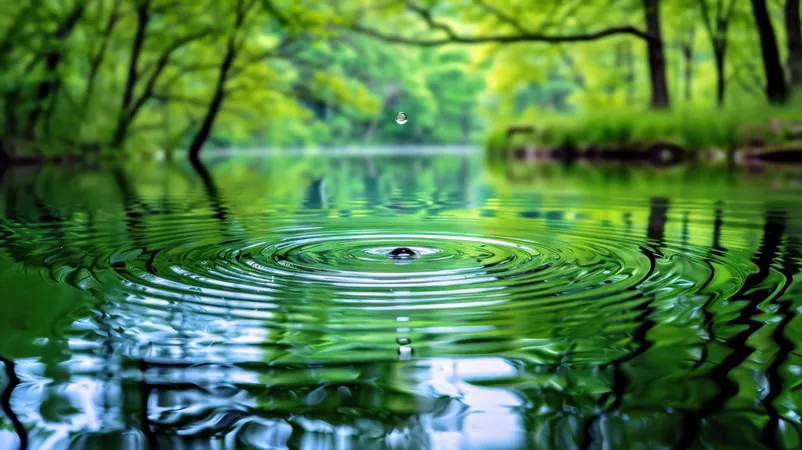
Unseen Connections: How Species Evolve Without Direct Contact
2025-08-31
Author: Wei Ling
The Hidden Forces of Evolution
Evolution isn’t just about competition for resources or survival of the fittest through direct interaction. A groundbreaking study reveals that species can influence each other's evolution without ever meeting. This fascinating research opens the door to understanding the unseen ripples of ecological change.
The Power of Indirect Ecological Effects
Led by researcher Shuqing Xu from Johannes Gutenberg University Mainz, this study dives into the indirect ecological effects that occur when one species alters the environment or impacts another species via a third party. These subtle shifts can transcend habitats, such as how land insects might influence aquatic creatures.
Experimental Setup in Nature's Laboratory
To explore this phenomenon, researchers created large outdoor mesocosms—experimental ponds designed to mimic natural environments. Each pond contained about 4,000 gallons of water, aquatic plants, algae, and the tiny crustacean, Daphnia.
In select ponds, the team introduced aphids that fed on duckweed, while maintaining other ponds as controls devoid of aphids. This setup effectively created two separate ecosystems that never directly interacted.
A Surprising Evolutionary Outcome
Remarkably, the study found that the land-based aphids influenced the evolution of Daphnia, despite their complete separation. The researchers meticulously monitored environmental and genetic changes simultaneously, establishing a clear link between cause and effect.
Nutrient Dynamics and Evolutionary Pressure
The aphids’ consumption of duckweed reduced its presence, allowing more light into the ponds. This triggered an explosion of pond phytoplankton, which in turn provided more food for Daphnia, leading to a population boom in the ponds with aphids. Nutrient levels surged, including a staggering 71.5% increase in phosphorus.
Genetic Divergence Through Natural Selection
As environmental conditions changed, the genetic makeup of Daphnia began to shift. Whole genome sequencing indicated that Daphnia from aphid ponds were diverging genetically from their control pond counterparts, with numerous significant genetic variations emerging over time.
The Cost of Adaptation
Transplant tests confirmed that the Daphnia species that evolved in the presence of aphids thrived in those same conditions but struggled in the controls, underlining a classic cost of specialization following rapid adaptation.
Ecological Ripples and Broader Impact
These evolutionary changes had cascading effects—shifting the composition of algal food sources and benefiting the aphids even further. The interplay between species highlights the complex web of interactions in ecosystems, where changes in one species can send ripples through others.
Rethinking Evolution in Community Context
For a long time, ecologists have believed that species interactions extend beyond direct contact, shaping evolutionary trajectories through complex networks. Past experiments with guppies pointed to how adaptations can transform entire ecosystems, challenging the notion of evolution as solely an individualistic struggle.
Rapid Evolution Unveiled
Daphnia serve as a prime example of rapid response to environmental pressures, demonstrating that swift evolutionary changes are more common in freshwater systems than previously thought. This research, published in the Proceedings of the National Academy of Sciences, adds another layer to our understanding of ecological dynamics and evolution.


 Brasil (PT)
Brasil (PT)
 Canada (EN)
Canada (EN)
 Chile (ES)
Chile (ES)
 Česko (CS)
Česko (CS)
 대한민국 (KO)
대한민국 (KO)
 España (ES)
España (ES)
 France (FR)
France (FR)
 Hong Kong (EN)
Hong Kong (EN)
 Italia (IT)
Italia (IT)
 日本 (JA)
日本 (JA)
 Magyarország (HU)
Magyarország (HU)
 Norge (NO)
Norge (NO)
 Polska (PL)
Polska (PL)
 Schweiz (DE)
Schweiz (DE)
 Singapore (EN)
Singapore (EN)
 Sverige (SV)
Sverige (SV)
 Suomi (FI)
Suomi (FI)
 Türkiye (TR)
Türkiye (TR)
 الإمارات العربية المتحدة (AR)
الإمارات العربية المتحدة (AR)